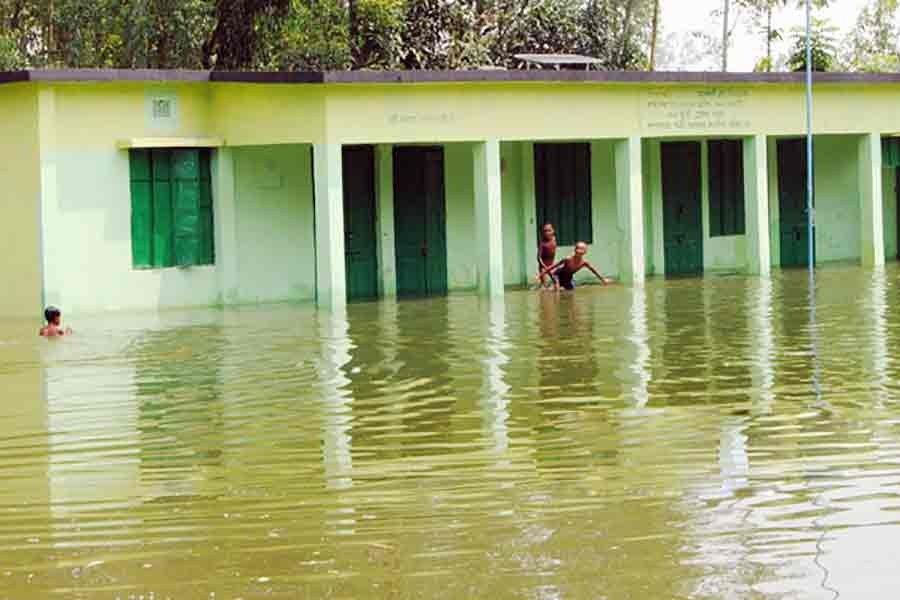Traditionally, it is the fear of overnight river erosions which keeps the rural school managements on their toes.Print media photographs and the TV footage continue to show the precariously tilted schools, some finally devoured by the raging rivers in a couple of days. It's comforting those fatalities from this year's monsoon malady are few. With a school devoured by a river, a phase of hectic activities to organise funds for a new school starts. Compared to these schools, the plight of flood-stricken schools and colleges is more woeful. They include both government-run and non-government institutions.
The education authorities have already started mulling the reopening of the primary and secondary schools. But they are also aware of the fact that the students at these institutions should be properly vaccinated before their attendance at school and college. But the problem lies elsewhere. Like with the cases of river erosion-hit institutions, there are hundreds of schools and colleges across the country; they are submerged in flood water. Some are compelled to keep suffering throughout the long-term impacts of flood. Successful vaccination campaigns run the risk of going awry, if the students and teachers cannot attend school in an atmosphere conducive to studies. As the government's education sector has chalked out its programme, the primary and secondary school students and teachers would be vaccinated first, for now. This phase will be followed by the higher classes. The mode of work may go for changes.
Reopening of schools only after the completion of students' inoculation is a development necessitated by an abnormal condition. It came in the form of an outbreak of the dreadful Covid-19 pandemic. This unusual scourge apart, hundreds and thousands of lower-class and junior schools remain marooned by stagnant flood water during monsoon almost every year. The situation in years comes to such a pass that even the brick-built schools remain inaccessible to the students and teachers. It's because the students have to slosh through ankle to knee-deep water-logged school neighbourhoods and compounds to step into their classrooms. In many low-lying areas, the teenage students, including girls, have to maneuver country boats to reach school. At the same time, the school buildings continue to be eroded by flood-waters remaining stagnant on their premises. There are schools in which classrooms remain under water for months in a row. In such a condition, the state of the classroom furniture and the office paraphernalia can be understood.
The conclusion which comes to the mind upon giving an in-depth thought to the flood-stricken schools is a terrible one, at least for this monsoon and post-monsoon period. To speak in anunsparing manner, school education in the country ought to brace for a dual challenge --- battling the corona pandemic, and taking necessary measures in advance to avert the assaults of a fierce flood. According to the Flood Forecasting and Warning Centre authorities, the water level of the major rivers may continue to rise. Many experts fear the situation may turn worse in the event of more rains upstream. Already flood-waters have devoured large tracts of cropland and human settlements in many districts in the vast areas in the country's northern region.
Rural schools and other installations have not been spared. The severe anxiety-hit and psychologically drained school students now have few options except banking on the assurances of the health authorities. They have said that after the university students, it will be the schools' turn for receiving the jabs --- in both cities and villages. And as for saving rural schools and colleges, and their reconstruction, people look to the Local Government Engineering Department.


